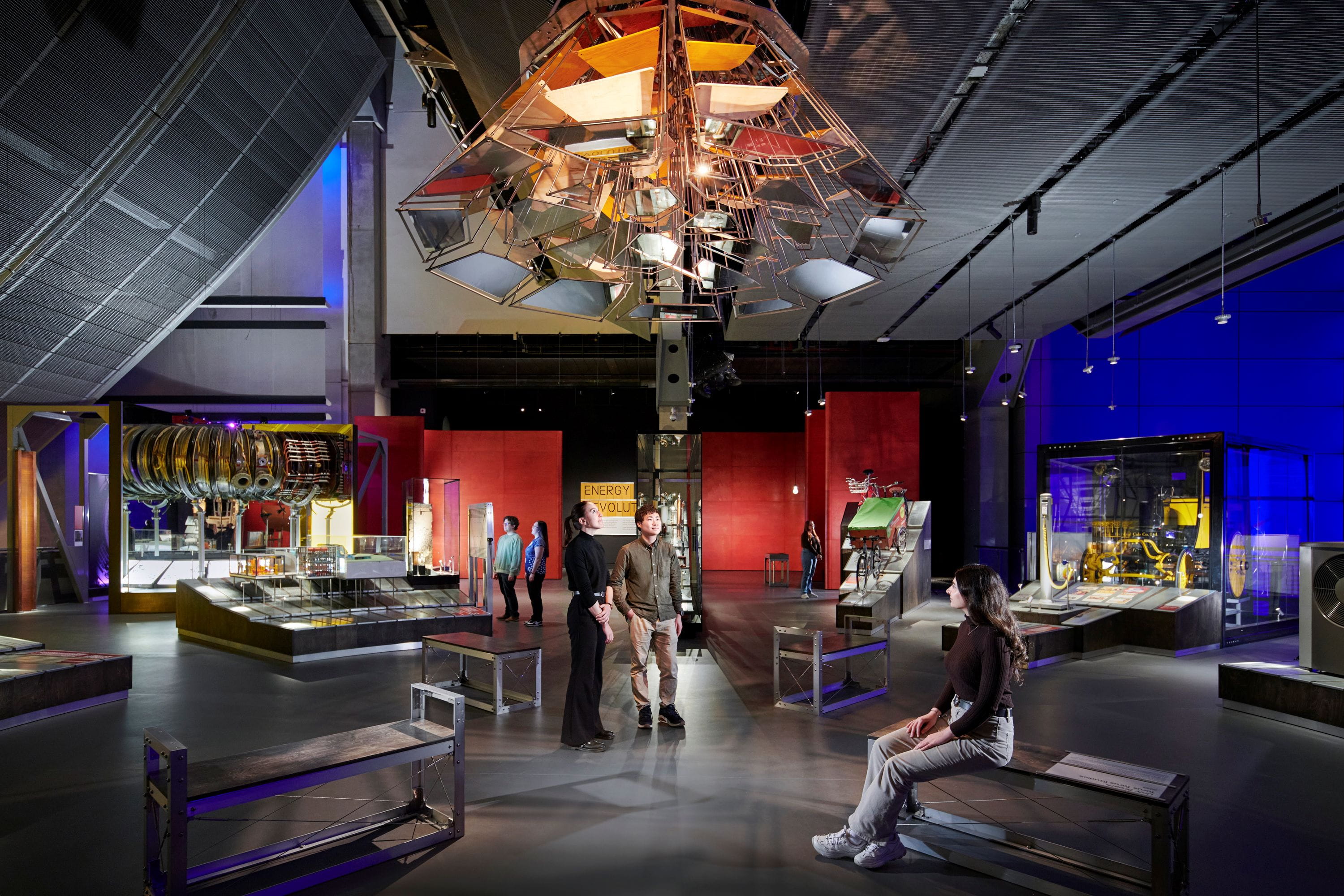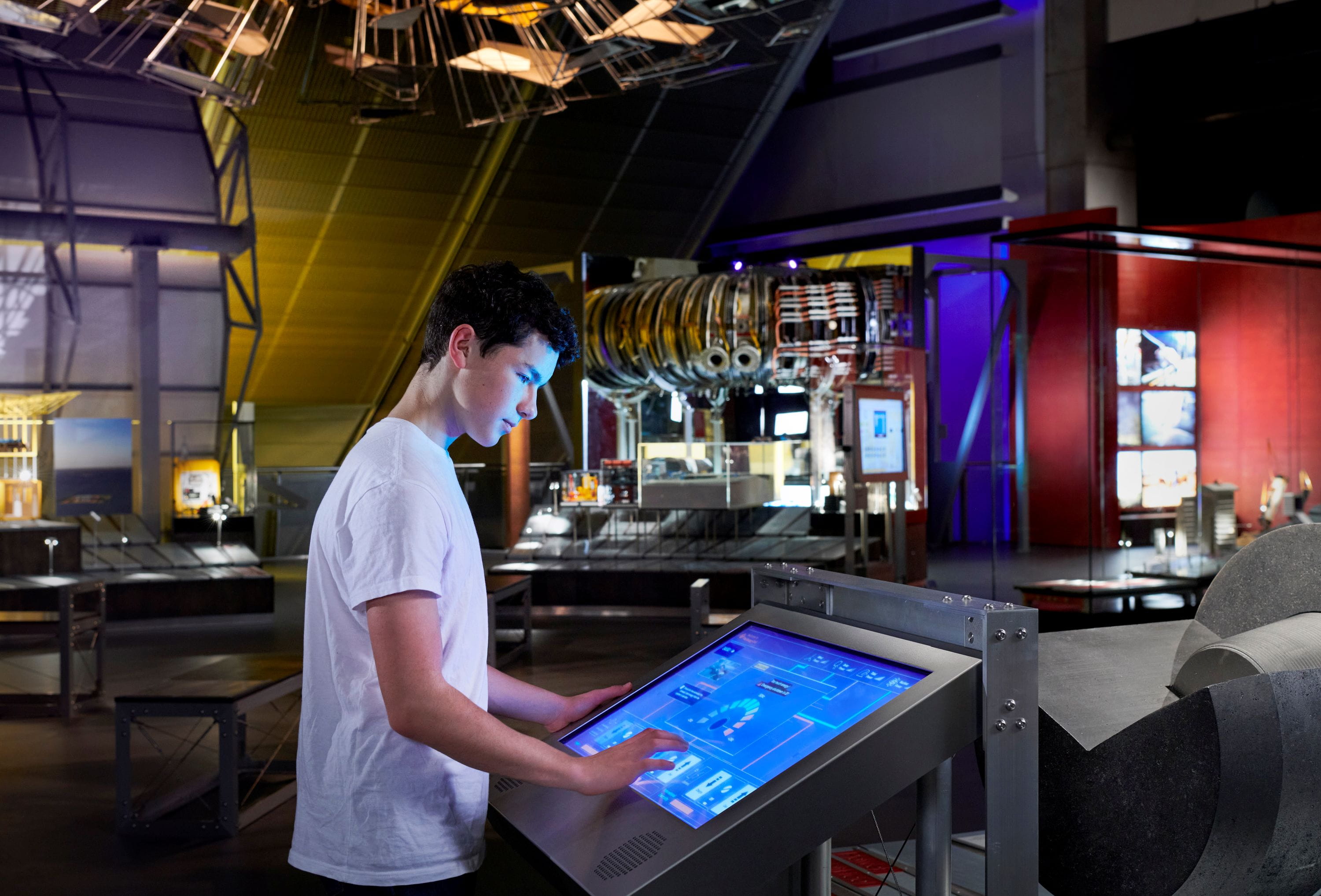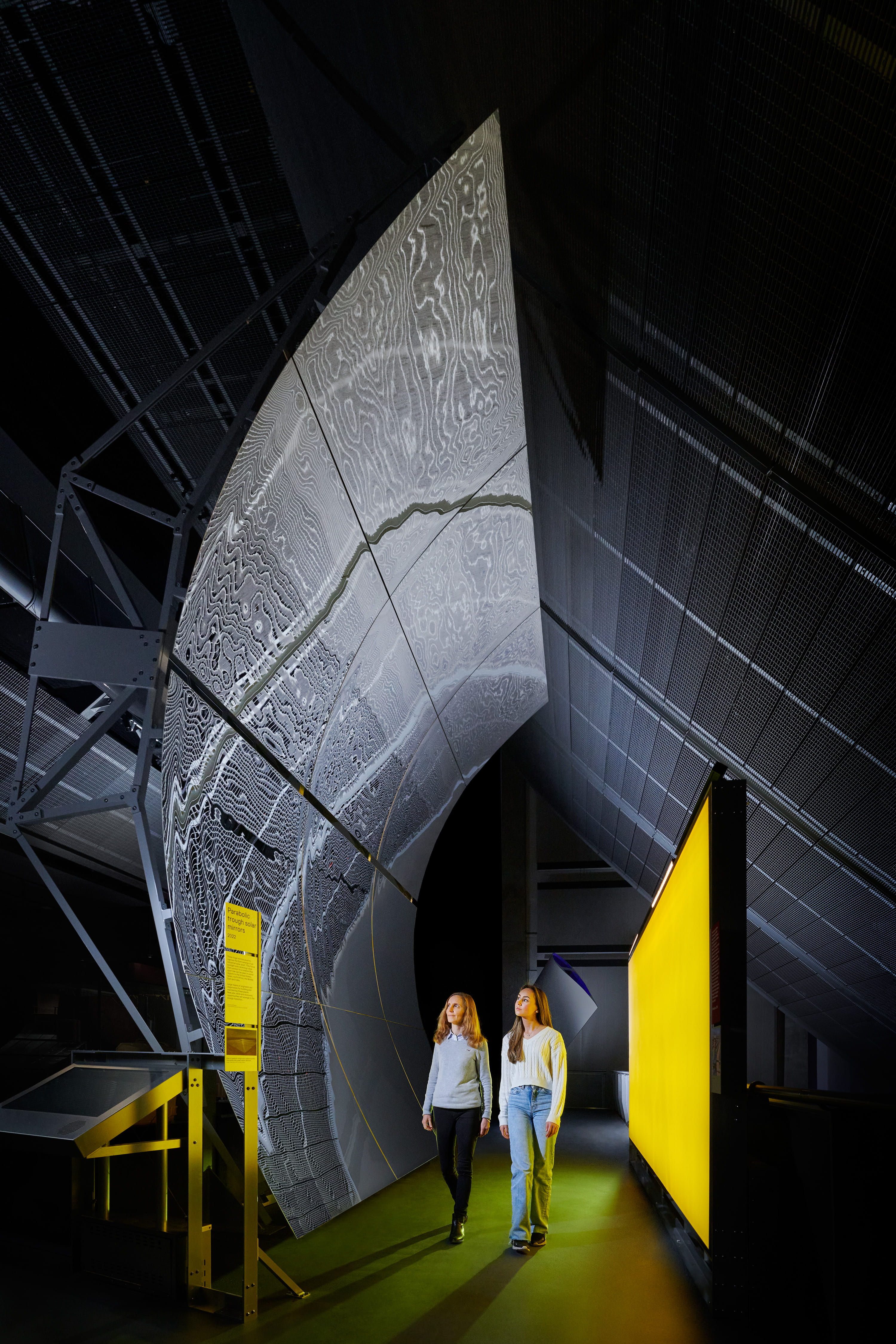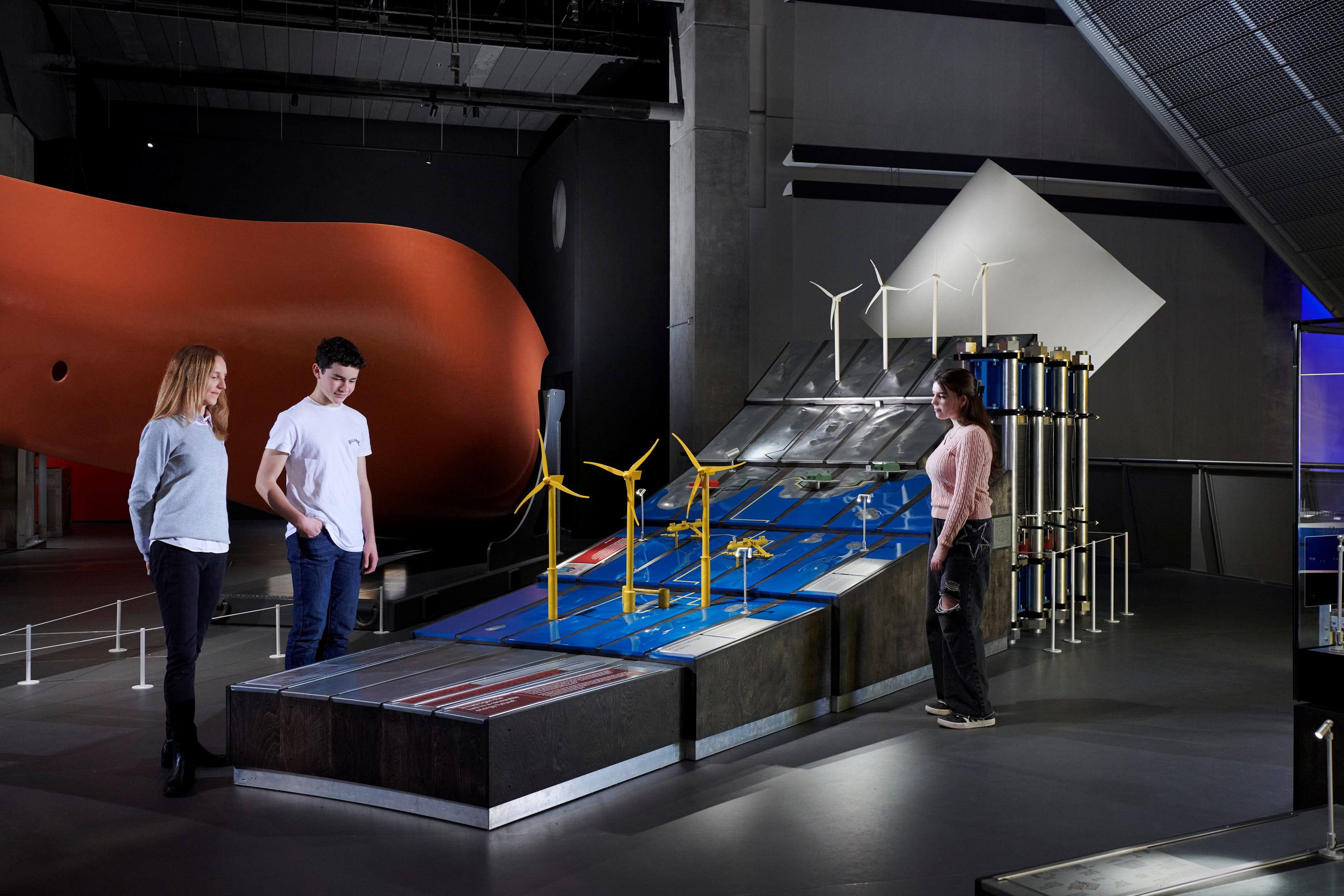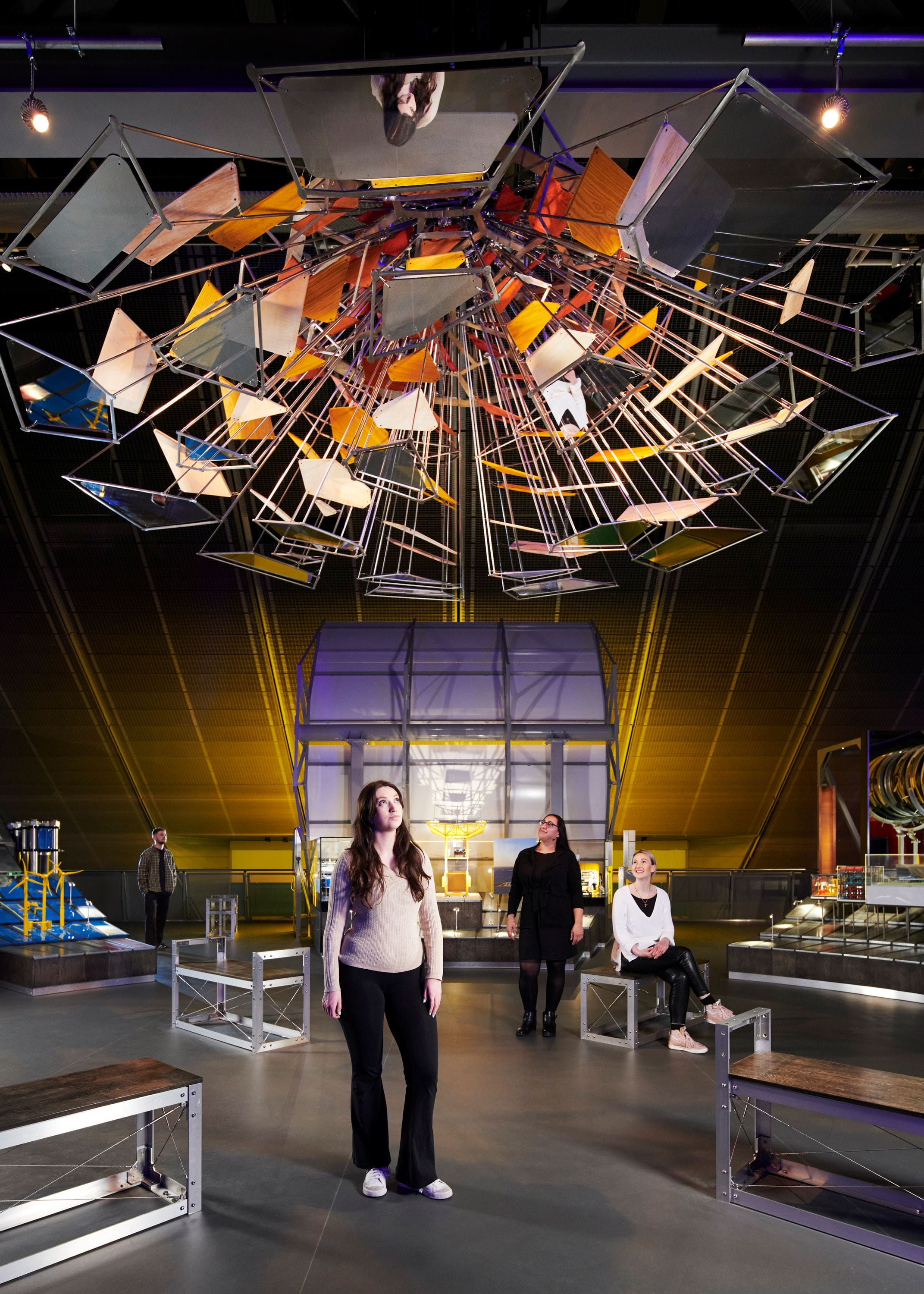- A million people have now visited Energy Revolution: The Adani Green Energy Gallery, a free gallery at
the Science Museum, London.
- In September 2025 the gallery received a prestigious AJ Retrofit and Reuse Award for its sustainable
approach to design and installation.
- Through fascinating historic and contemporary objects and engaging digital exhibits, visitors can
explore the surprising history of our current energy transition and discover how the world can generate and
use energy more sustainably as we journey towards a low carbon future.
London, 16 October 2025: Energy Revolution: The Adani Green Energy Gallery, an award-winning
free gallery at the Science Museum, that explores how the world can generate and use energy more sustainably,
has welcomed one million visitors since opening in late March 2024.
Dedicated to examining one of the greatest challenges of our time – the rapid energy transition
anddecarbonisationneeded to limit climate change – the gallery features striking displays of
contemporary and historicobjects,engaging digital exhibits and specially commissioned models, which
together show how the past,present and future ofenergy systems are shaped by human imagination and
innovation.
The gallery, which highlights technologies and projects from the UK and abroad – from hydrogen poweron
Orkney toterracotta air-cooling façades in India and solar farms in Morocco – is popular with both
familiesand schoolgroups. More than 10,000 students have now explored the gallery as part of educational
visits sinceit opened.
Mr Sagar Adani, Executive Director, Adani Green Energy, said: “We are honoured towitness
EnergyRevolution: The Adani Green Energy Gallery inspiring a million minds and igniting
conversationsaroundsustainability and innovation. At Adani Green Energy, we believe that a sustainable
future is rootedin boldinnovation and collective action. This milestone reflects the shared commitment
to shaping a greenertomorrow andshowcases the power of education in driving meaningful change. We
congratulate the Science MuseumGroup on achievingthis significant landmark and are proud to support a
gallery that continues to trigger curiosity andnurturesolutions for a cleaner, more resilient world.”
Sir Ian Blatchford, Chief Executive and Director of the Science Museum Group, said:“We
aredelighted to have welcomed a million visitors to this stunning gallery, helping ignite curiosityamong
those whovisit and sparking conversations about the need to generate and use energy more
sustainably.Reaching thisimpressive milestone is testament to the gallery’s award-winning design and the
stories behind theremarkableobjects on display. I am grateful to Adani Green Energy for their generous
sponsorship which madethe gallerypossible.”
Energy Revolution: The Adani Green Energy Gallery was designed by architect and design studio
UnknownWorks andrecently received a Retrofit and Reuse Award from Architects Journal for its sustainable
approach todesign andinstallation. As part of the award-winning design, more than 200 redundant metal
shelves from themuseum’s formerobject store were repurposed to display objects in the gallery. Aluminium
was used where possible asit can beeasily recycled, with energy-efficient LEDs used to light the
gallery. Together these actions helpedreduce carbonemissions from the creation and continued operation
of the gallery.
Through the lens of imagination, the gallery examines this century’s defining challenge across
threesections. InFuture Planet, visitors can examine how climate scientists use mathematics and
complexcomputer-based models tounderstand our planet, and what these tell us about the range of climate
futures that might lieahead, through aninteractive exhibit developed with the UK Met Office. Also on
display are instruments used toobserve and measurethe climate at sea, on land, in the air and even from
space. These include an air-sampling flaskused forobservations of atmospheric carbon dioxide based on
Charles David Keeling’s original design and asatellite-basedscientific instrument which takes precise
observations of sea surface temperature from space.
In Future Energy, vital low carbon technologies that are reimagining how energy is supplied and used
today arehighlighted alongside historic artefacts which provide a longer view of the energy transition
away from fossilfuels. Visitors can see the first electric taxi, the elegant black and yellow Bersey cab
hailed by Londoners in1897, and cables made for the world’s first public electricity network, which was
established in London in 1882 andwent on to transform the way we live. On display is a towering
five-metre-tall parabolic solar trough mirror used onhuge solar farms to concentrate sunlight and
generate electricity and a vast seven-metre-long prototype tidalturbine blade used near Orkney in 2016
to help generate enough electricity to power a thousand homes. A hugequadrant from the Zero Energy
Thermonuclear Assembly is also on display for the first time. This nuclear fusionexperiment was created
in the late 1950s by British scientists who imagined a world filled with abundant energythanks to
nuclear fusion. Visitors can also examine a model of a small modular nuclear reactor made by
Rolls-RoyceSMR, which may power more of our homes in the future, alongside part of a real (but
non-radioactive) canister usedfor storing the UK’s nuclear waste.
Our Future looks forward to a new world, with children’s creative ideas of how the world will meet its
future energyneeds displayed alongside expert responses to them. Visitors can see a decarbonisation
tracker which is updatedannually and displays how the UK is performing on its low carbon journey.
At the centre of the gallery, uniting science and art, is an art commission Only Breath, a kinetic
sculpture thatmoves and blooms, stretching to around five metres in diameter when unfurled. Created by
artists Alexandra Carr andColin Rennie from Torus Torus Studios, the sculpture was made from repurposed
mirrors, recyclable stainless steelandwindblown wood and signifies the power of nature to inspire
technological change.
Energy Revolution: The Adani Green Energy Gallery is generously supported by Adani Green Energy, one of the world’s
leading renewable energy companies. The free gallery opened at the Science Museum on 24 March 2024 on Level 2 in the
West Hall.
Notes to Editors
Information about the gallery is available to the public via
sciencemuseum.org.uk/see-and-do/energy-revolution-adani-green-energy-gallery.
Please contact the Science Museum Press Office via
pressoffice@sciencemuseum.ac.uk for further information and images.
School visits
Schools, home educators and other education groups who wish to visit the gallery can add Energy Revolution to their
itinerary and book their visit via the
museum website.
About the Science Museum
The Science Museum is part of the Science Museum Group, the world’s leading group of science museums that share a
world-class collection providing an enduring record of scientific, technological and medical achievements from
across the globe. Over the last century the Science Museum, has grown in scale and scope, inspiring visitors with
exhibitions covering topics as diverse as robots, codebreaking, cosmonauts and superbugs. The Science Museum was
named a winner of the prestigious Art Fund Museum of the Year prize for 2020.
http://www.sciencemuseum.org.uk/


